Reading Continuity in Megaohms Checking for Faults
Originally Web posted 24 September 2000.
Content last modified 24 September 2000.
Simple Interpretation of Continuity Tester Readings
Below are photos of both a simple lightbulb and battery continuity tester, and a standard DMM set to its resistance (Ohms) range, showing various conditions one is most likely to find when testing D.C. continuity of a circuit. Do not be concerned about what is attached to the test leads, nor the finer points of how the test leads are attached. Focus instead on the relative brightness of the lightbulb, and the readings on the face of the meter.
If you are lucky enough to have a DMM with a continuity test setting, or a specially manufactured continuity test device which makes noise or otherwise indicates continuity, you need proceed no further here: if your tester beeps, chirps, lights up, or does whatever it does when you touch the two test leads to each other, and does something else when the test probes are not connected to each other nor anything else, that is all you need to know!
Equipment Overview
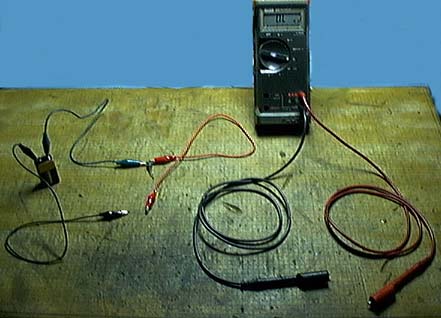
Here are the two continuity testers used in these examples. The one on the left is nothing more than a 9V battery connected in series with a common small December Holiday lightbulb (the tiny object between the red and green[!] alligator clipleads). The one on the right is a Fluke model 77 DMM. The 77 actually has a continuity test setting, as described above. In these pictures, we're using the resistance mode (Ohms), to demonstrate how to interpret readings on any DMM which lacks a continuity test feature.
No Continuity - Open Circuit
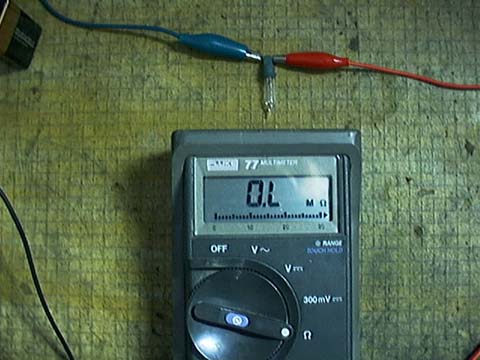
Note that the lightbulb is not lit up, even slightly, and that the meter reads "OL", which is this particular model's way of indicating a resistance outside its measuring range (OverLoad).
Full Continuity - Short Circuit
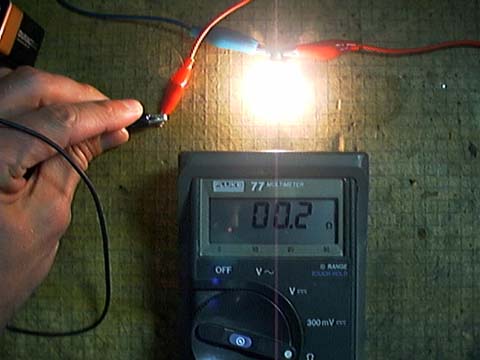
Note that the lightbulb is brightly lit up - so bright that there is a vertical "digital clipping" line from the camera. The meter is displaying 0.2 ohms, the residual resistance of its test leads. For almost every common household purpose, any reading less than 1.0 ohms is sufficiently low to be considered excellent conductivity. This is what one hopes to find in electrical power wiring. On the other hand, if one is expecting no continuity, this is a short circuit… all too good a short circuit, at that!
Good Continuity - some resistance
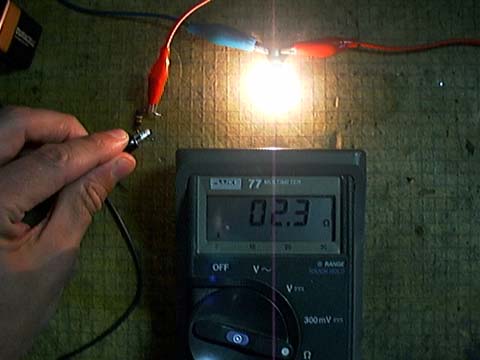
Note that the lightbulb is brightly lit up, though less so than for the short circuit condition above. The meter is displaying 2.3 ohms. In some circumstances, that is a good, low-resistance connection (or an undesirably good short circuit). In others, that is too much resistance, and there may be problems, such as excessive heat generation.
So-So Continuity - more resistance
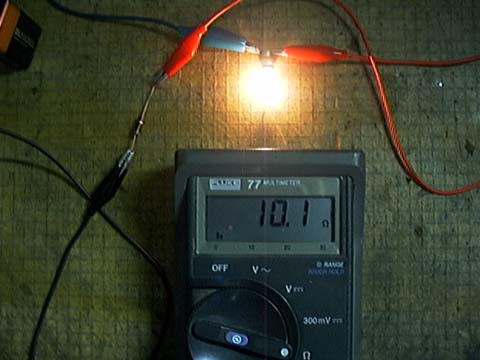
The lightbulb is moderately brightly lit up, though less bright than above (no clipping line). The meter is displaying 10.1 ohms. This is enough resistance to cause overheating and all sorts of problems in electrical power circuits, yet is relatively inconsequential in some other areas of electronics.
Indeterminant Continuity - moderate low resistance
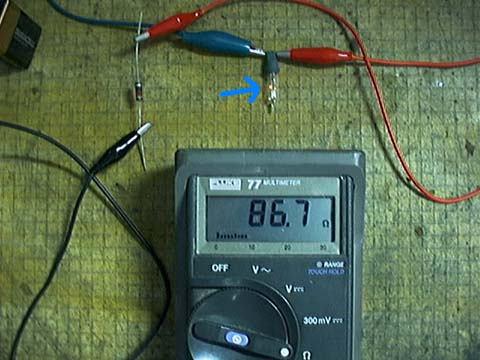
Note that the lightbulb is just barely lit up at all—the blue arrow in the picture is pointing to the dim yellowish glow (not to be confused with the whitish fluorescent light glare from my suboptimal photographic technique). The meter is displaying 86.7 ohms, a moderately low resistance for electronics, and a huge resistance for electrical power applications. This resistance is definitely low enough to conduct sufficient ground loop currents to cause problems, even though this particular lightbulb glows dimly.
Indeterminant Continuity - moderate resistance
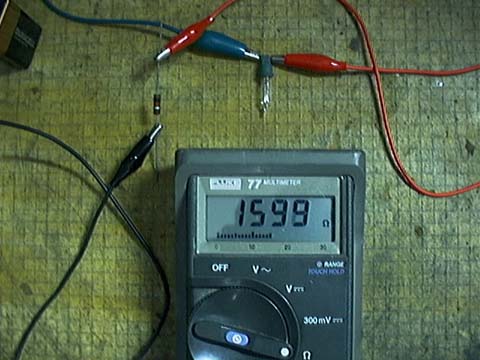
The lightbulb is not lit. The meter is displaying 1599 ohms, almost 1600 ohms, or 1.6kΩ. This is a middle-range resistance value in general electronics, and far higher than what is normally found in electrical power systems. There is still plenty of continuity for a ground loop to have ill effects.
Little Continuity - high resistance
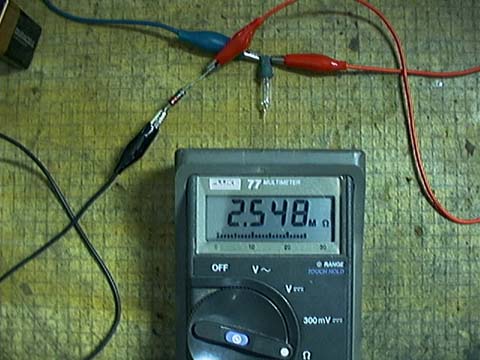
The lightbulb is not lit. The meter is displaying 2.548 MΩ, which is 2.548 million ohms, or 2,548,000 ohms. This is about the highest resistance found in modern home electronic equipment. For numbers this large, rounding to 2.6 MΩ is plenty close enough. For most purposes, any numbers 2.2 MΩ or higher may be treated as a no continuity situation. Ground loops may still be a problem, though less likely to have severe effects, with this, or greater, resistance. If your meter is capable of reading resistances higher than 10.0 Megohms, and you see such numbers, those may almost always be treated as "no continuity" for ground loops, and most other common purposes.
![]() World O' Electronics
World O' Electronics ![]() The Sonically Pure Pages
The Sonically Pure Pages
This Siber-Sonically Pure Page is  and
and ![]() compliant.
compliant.
yarbroughsuired97.blogspot.com
Source: https://www.siber-sonic.com/electronics/ContTestRead.html
0 Response to "Reading Continuity in Megaohms Checking for Faults"
Post a Comment